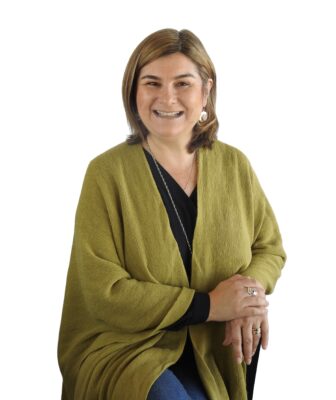
Another year, another momentous month, and many different energies pushing and pulling in many different directions. If there is one recommendation for the now, is trying to maintain some equilibrium and keep your cool. Things could fray at any moment, so it’s beneficial to take three deep breaths whenever you feel on the verge of overwhelm or your fuse is lit by your own sense of frustration, or other’s demands, or information and energy overloads. Reminds me of an old Broadway musical called, “Stop the World, I Want to Get Off!”
The multidimensionality of events and stimuli is quite evident in the outer material reality, but it is mostly happening in the mind/astral realm. Our emotional bodies are jostled, and our physical bodies are telegraphing frantic messages like “danger ahead”, or “Hey, pay attention! We’re in pain, discomfort and insecurity!” This is unsurprising when the entire planet is immersed in a chaotic fishbowl of artificial digital atmospheres, media-fostered fear headlines, and one crisis after another all clamouring for attention and action.
Take a BIG step back from it all! All this is not who you are, nor is it indicative of the true nature of Nature and every other soul in this world. Meditation is important for calming the mind stuff and connecting and caring for our physicality even more so. When I get rattled, I listen to music…calming, meditative and ethereal music. Do whatever works for you, not as a mindless form of escapism, but as a conscious form of self-care and rebalancing.
The astrological/energetic markers for the weeks ahead are also multidimensional and multipurpose. Remember, what we call astrology is nothing more than a symbolic language for understanding life on Earth, nothing more and nothing less. It won’t make you more spiritual, but it can point you towards things in your psyche that may get in the way (karmic habits) of your full self-realization. When applied to national or world events, astrology has an uncanny ability to predict potential manifestations of our collective consciousness or help us understand in hindsight what the hell just did happen, and why.
We are embodied forms of Consciousness, and that is why everything ‘feels’ so freaking real. At the level of the Absolute, it is all just a form of play manifesting in a dualistic way. So, what is the Absolute wanting us to pay attention to, right now? Remember that the transiting Nodal Axis is astrology’s way of highlighting the most important thing, right now. (For those of you who are students of astrology or grizzled veterans, please reference the charts I’ve provided below.)
If you have your own chart, check for any aspects to the degrees mentioned in the next paragraph, and remember that there can be five major aspects: Conjunctions (within 6 degrees of one another), Squares (at a 90-degree angle between points), Sextiles (60 degree angles), Oppositions (180 degrees opposite one another), and Trines (90 degrees in relationship to each other).
First up the Full Moon on the 16th arrives at 4:55pm GMT (London) at the 27th degree and 59th minute of Leo. Mars and Venus are conjunct at 16 degrees of Capricorn, and Pluto is now at the 27th degree of Capricorn and quincunx to the Full Moon. Quincunxes are awkward and irritating energies. Like being stuck on a plane with someone next to you snoring and you must put up with it. A Quincunx is a 150-degree angle between two points.
This Full Moon is being squared (challenged) by the Nodal Axis at 27 degrees of Scorpio and Taurus. Recall what I said above, about the transiting Nodes saying, “pay attention to this!”? Here it is. Taurus is our values versus the culture or society’s value system. Scorpio is about secrets and security, and depth…lots of deep dark stuff. Leo is about the heart chakra, yes, but also loves being the king or queen and feeling superior. The Sun at almost the last degree of Aquarius signals a call to look beyond the obvious and discover the higher ground perspective about what’s happening — and no, you cannot ignore or avoid what is unfolding.
The Native Americans feel that whatever is happening in the moment is exactly what needs to be happening, and to push it away or rationalize about it is never going to work. Better to open one’s eyes to the opportunity for remembering and growth instead of resisting. This will be a really great time for seeing things with new eyes, and then planting new thoughts and ideas around what sort of actions would you like to create that will build a new and better tomorrow for you and everyone else. Think “both/and” and take it beyond the personal.
It is also a call to participate, even if you have strong feelings that are the opposite. For example, I have been wrestling with yearnings to simply chuck it all, head off into the woods, ditch my tech and live like a hermit. That may have a romantic spin to it, but it is a sure-fire way to fall off the edge of the world. Instead, this New Moon carries with it an energy to double one’s efforts to find and connect with your tribe and start building something in the way of a cooperative or community that looks and feels better than what the old world is offering. That world is dying, though it is putting up one hell of a fight along the way.
The next huge event is the USA Pluto Return on February 20th, 2022. To be frank, we’ve been in the energy of this already for months, and this is the first exact contact of Transiting Pluto to the USA Natal Pluto since July 4th, 1776. That’s never happened before, and it is truly a once-in-a-lifetime event. How many times have you heard that in the past two years? Plenty, I suspect. Make no mistake, this one is bigger than the Saturn-Pluto conjunction on January 12th, 2020, that heralded in (or helped trigger) the COVID era.
The main event is Pluto conjunct Pluto, in Capricorn. It is the end of America as we have known it, and we will have to see how and what the people of the USA choose to do with that. All the fruits of the seeds sown for 248 years are going to fall out of the sky all at once for good or bad. In America they refer to this as “chickens coming home to roost.” Hence the title for this article as it refers to how karma always returns to its sender.
Remember that there is only “good-bad” in duality. It may be more useful to phrase this as “helpful, or not helpful.” Since Capricorn governs governments, all manner of institutions (political, military, financial, medical, and social), a further dis-integration of the same may accelerate under Pluto’s tutelage.
Simultaneously, the regular folk may also realize that their leadership has been leading them down the garden path for a very long time. It will be time for everyone, not just Americans, to realize that the only power that these institutions and leaders have is the power we have ceded to them. It will be time to emancipate and wean ourselves out of the outworn habit of placing our trust and power into the hands of others, and start growing into mature, adult souls capable of looking after ourselves and each other in an egalitarian sort of way. Pluto is the Lord of Death, the Lord who Taketh Away, and anything that no longer is serving the collective soul of humanity is going to be removed…one way or another. Best not to resist it on any level as that is what causes suffering.
Once again, with the transiting Nodes involved the message is that THIS is the most important thing to focus on. Mars and Venus conjoined in Capricorn will stimulate loving ourselves no matter what happens and will stimulate our instincts to create structures and modalities designed to foster mutual survival and compassion…no matter what. Mercury conjunct the USA Nodal Axis in Aquarius-Leo will ask us, can you “think” in a new way about how to go about solving problems? In a nutshell, innovate from intuition, and provide leadership with heart. The transiting Moon in Libra conjunct the USA Natal Juno might be saying “all are welcome to the new Dispensation”, or something like that.
There will be two further conjunctions of Pluto to the USA Pluto this year, on July 12th when retrograde Pluto touches the natal Pluto, and the last pass, the “Resolution” will occur on December 28th, 2022.
So, what might happen at the initiation phase of this major archetypal event? Before I hazard a guess, I need to make the following statement:
One of the reasons that the world is the way it is and has been for thousands of years is because those entities and people whose orientation is rooted in domination of others in order to ensure the survival of the fittest, or hold the belief that the strong deserve to survive and the weak don’t matter, or they that were born to rule and see themselves as superior to us Muggles, is about to be heavily challenged. The globalists have woven the world together into a tight, authoritarian digital construct that they imagine they rule, and don’t kid yourselves, they know about astrology, and the hidden metaphysical arts and methods, and have employed their knowledge of these things to mold the world and human beings as they see fit. Talk about lack of consent on our part! They have been well organized, insanely well-funded, and working towards total hegemonic control of this planet and all it’s people and resources for a very long time. They won’t go away quietly either.
This year is pivotal in challenging that mindset and agenda, and replace it with a spiritually based, human-oriented philosophy and culture that works for everyone. Otherwise, once Pluto moves into Aquarius in the early part of 2023, the psychotic push towards an all too real one world digital tyranny may well culminate between 2023 and 2025 and be in place until well after Pluto leaves Aquarius in 2043.
The rabbit hole goes ever so deep, and into some real sci-fi places that many would prefer not to venture. There are malevolent forces that have never held anything but envy for this planet, and animosity towards the humans and the divine experiment we are in and co-creating. Some call them the Archons, or the Jinn, or the Watchers. In the Americas they are referred to as “Wetiko”. Modern mystics and psychologists alike tend to think that this is an innate part of our original human design. I seriously contest that notion, as I feel that our original design never was intended to be predatory and deliberately cruel. These beings can infiltrate our minds, and we may unknowingly and ignorantly attribute some of our less desirable behaviours or propensities to our minds and personalities to our parents, our upbringing or some other purely psychological reason. If we remain unaware of what can influence and does influence us, then we cannot take responsible action to correct ourselves and trust solely in our own internal guidance system. A good technology example is television…or the Internet, and especially, smartphones.
I strongly feel that there are other lifeforms in the multiverse, many who benign and benevolent, and some that are hostile. These hostile ones are given the some of the same abilities and some form of intelligence and volition from the Creator of All That Is. They are allowed to follow their predatory instincts, because the true nature of Love is always non-judgmental of Itself and is always allowing. It will be up to us to grow in wisdom and reactivate the perceptual and practical skills needed to neutralize all such negative influences and do so without condemnation or judgment.
I remember listening to a very wise being from Arcturus who was speaking though a human channel in 1994 who addressed the thorny issues of entity possession, dark forces, and all that sort of stuff. With an abundant sense of humor and laser-like perception, he dropped the ultimate non-dualism statement: “After this world has ascended, that ‘darkness’ will be revealed to be of the Light.” They are a type of lifeform but their nature is synthetic, i.e., artificial sentient intelligence. One serious little caveat — this same Arcturian being also said that he and his colleagues were told before they came to Earth that they should not participate with evil in any form. Doesn’t leave a lot of wiggle room these days.
Okay, one of my guesses about the upcoming exact meeting of Pluto to the USA Pluto is a big disruption in the world financial markets, starting on Wall Street or perhaps something in the currency trading markets. This could be precipitated by any number of factors, so I can’t reliably name a catalyst. Personally, any number of current events could be the trigger. Russia invading the Ukraine is one I can name. Another is the Canadian PM Trudeau deciding to break up the Freedom Convoy, while still another could be the removal of Britain’s scandal-ridden Prime Minister from power. This might precipitate a crisis of confidence in the UK currency — the Pound Sterling, and trigger panic in the markets and causing a devaluation.
Well, the bubbles have been building for some time in the real estate, speculative stock trading, and currency trading markets (cryptocurrencies as well). The growing gap between the very rich and the rest of us has only gotten worse the last two years, when another huge and secret transfer of wealth upwards to the 1% of the 1% was enacted. Pluto presided over the crash of the cheap credit and real estate markets in 2007-2008, and he may just end his tenure in Capricorn the same way he entered it – in a dramatic fashion. This is just one guess. What you do feel, what do think?
One thing is for sure…the only constant is change, so be prepared for anything. A full-on collapse may be just the galvanizing event to bring us together at a whole new level and build a new tomorrow. After all, isn’t all we have ever wanted is to be free? Isn’t that the rallying cry in many parts of the planet right now? Here’s our opportunity, our gift. Let’s make it real, for all.
About the Author:

Isaac George is an internationally recognized intuitive mentor/coach, evolutionary astrologer, conscious channel, self-published author and musician. After a life-altering spontaneous kundalini awakening in 1994 he explored various healing modalities, including hypnotherapy and Reiki. In 1998 he began spontaneously channeling Archangel Ariel and other dimensional intelligences.
Originally from the United States, Isaac currently resides in the UK and offers Spiritual Mentoring sessions and programs and Evolutionary Astrology consultations.



 In 1896, a man in Dummerston, Vermont, was driven from his beloved home over what should have been a minor family dispute. He generally got along well with his brother-in-law, who lived next door. One day in an argument, however, the brother-in-law—who was a bit of a hothead—threatened to punch him. In reaction, the man had his brother-in-law arrested, which the neighbors saw as a massive overreaction. At the trial, the man acted haughty and “arrogant” toward others, according to newspaper accounts. He became so unpopular for his attitude and actions that, shunned by the local residents, he felt compelled to leave the town he loved, never to return.
In 1896, a man in Dummerston, Vermont, was driven from his beloved home over what should have been a minor family dispute. He generally got along well with his brother-in-law, who lived next door. One day in an argument, however, the brother-in-law—who was a bit of a hothead—threatened to punch him. In reaction, the man had his brother-in-law arrested, which the neighbors saw as a massive overreaction. At the trial, the man acted haughty and “arrogant” toward others, according to newspaper accounts. He became so unpopular for his attitude and actions that, shunned by the local residents, he felt compelled to leave the town he loved, never to return. Last year, I had the pleasure and honour to meet His Eminence Shyalpa Tenzin Rinpoche, first via the platform Clubhouse, then via WhatsApp and phone calls. Finally, last September, H. E. Rinpoche stopped in the UK after touring the US.
Last year, I had the pleasure and honour to meet His Eminence Shyalpa Tenzin Rinpoche, first via the platform Clubhouse, then via WhatsApp and phone calls. Finally, last September, H. E. Rinpoche stopped in the UK after touring the US. Veronica: Why is it important to build a Universal Peace Sanctuary and what is the inspiration behind this wonderful project?
Veronica: Why is it important to build a Universal Peace Sanctuary and what is the inspiration behind this wonderful project?
 In the U.S., millions of shoppers pack clothing stores, excited to key into the newest trends while paying low prices. On the other side of the world, low-wage workers—many of them young girls— are crushed under the hammer of “fast fashion” (the mass production of cheap, poor quality, disposable clothing), laboring without safety protections or adequate rights. Fast fashion’s impacts on both the environment and human rights are evident, and slow fashion may just be the only solution to a greener future.
In the U.S., millions of shoppers pack clothing stores, excited to key into the newest trends while paying low prices. On the other side of the world, low-wage workers—many of them young girls— are crushed under the hammer of “fast fashion” (the mass production of cheap, poor quality, disposable clothing), laboring without safety protections or adequate rights. Fast fashion’s impacts on both the environment and human rights are evident, and slow fashion may just be the only solution to a greener future. Many meditators, healers and people of goodwill are attracted to the idea of distant healing — that in meditation, contemplation and prayer we can help relieve suffering and pain at a distance.
Many meditators, healers and people of goodwill are attracted to the idea of distant healing — that in meditation, contemplation and prayer we can help relieve suffering and pain at a distance. We may be slowly returning to our offices (more or less), but the strains of the pandemic are hardly over. As we enter a transitional stage after almost two years of trauma and strain, more than ever we need ways to refresh our energies, calm our anxieties, and nurse our well-being. One potentially powerful intervention is rarely talked about in the workplace: The cultivation of experiences of awe. Like gratitude and curiosity, awe can leave us feeling inspired and energized. It’s another tool in your toolkit and it’s now attracting increased attention due to more rigorous research.
We may be slowly returning to our offices (more or less), but the strains of the pandemic are hardly over. As we enter a transitional stage after almost two years of trauma and strain, more than ever we need ways to refresh our energies, calm our anxieties, and nurse our well-being. One potentially powerful intervention is rarely talked about in the workplace: The cultivation of experiences of awe. Like gratitude and curiosity, awe can leave us feeling inspired and energized. It’s another tool in your toolkit and it’s now attracting increased attention due to more rigorous research. About 20 years ago, working for National Geographic, and with a grant from the National Institute on Aging, I started identifying and studying the longest-lived people, those who are in what we called the world’s Blue Zones. These are people who have eluded heart disease, diabetes, dementia, and several types of cancer.
About 20 years ago, working for National Geographic, and with a grant from the National Institute on Aging, I started identifying and studying the longest-lived people, those who are in what we called the world’s Blue Zones. These are people who have eluded heart disease, diabetes, dementia, and several types of cancer. Have you ever gotten into bed at the end of the day and realised that you haven’t spoken out loud to anyone since the day before? Or simply found yourself feeling completely and utterly alone?
Have you ever gotten into bed at the end of the day and realised that you haven’t spoken out loud to anyone since the day before? Or simply found yourself feeling completely and utterly alone? “Those who are emotionally lonely will find it difficult to improve things without tackling the root of the problem,” says Dr. Spelman. “Emotional loneliness is not circumstantial but, rather, comes from within.”
“Those who are emotionally lonely will find it difficult to improve things without tackling the root of the problem,” says Dr. Spelman. “Emotional loneliness is not circumstantial but, rather, comes from within.” But situational loneliness doesn’t just arise in those who relocate alone, as social media editor Sarah discovered when she moved countries with her partner. Sarah left her Sydney home in March 2017 to join her partner in London, where he had arrived a month earlier to start a new job and find the pair a home to live in — although she admits that “didn’t mean it was smooth sailing”.
But situational loneliness doesn’t just arise in those who relocate alone, as social media editor Sarah discovered when she moved countries with her partner. Sarah left her Sydney home in March 2017 to join her partner in London, where he had arrived a month earlier to start a new job and find the pair a home to live in — although she admits that “didn’t mean it was smooth sailing”. “It was a really bewildering, lonely time,” she says. “The jump of being plonked into a huge arts school, in just one of hundreds of halls of residence in a sprawling city I didn’t understand, made me retreat into myself and I struggled to make friends in the face of it all.
“It was a really bewildering, lonely time,” she says. “The jump of being plonked into a huge arts school, in just one of hundreds of halls of residence in a sprawling city I didn’t understand, made me retreat into myself and I struggled to make friends in the face of it all. It’s probably been a long time since you lay on your back in the grass, looked up and wondered, Why is the sky blue? Or since you took the time to consider a question as difficult as, Where does the universe begin, and where does it end?
It’s probably been a long time since you lay on your back in the grass, looked up and wondered, Why is the sky blue? Or since you took the time to consider a question as difficult as, Where does the universe begin, and where does it end?